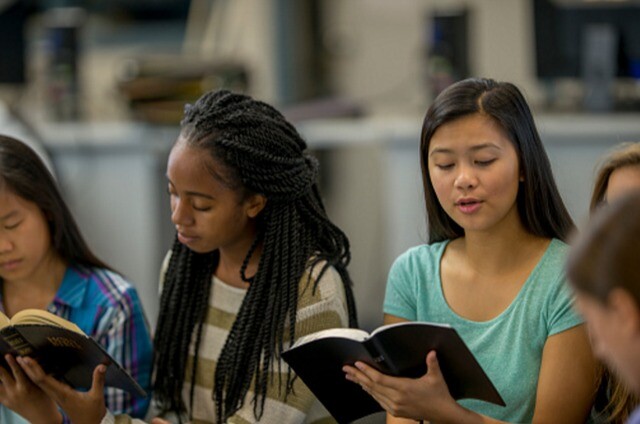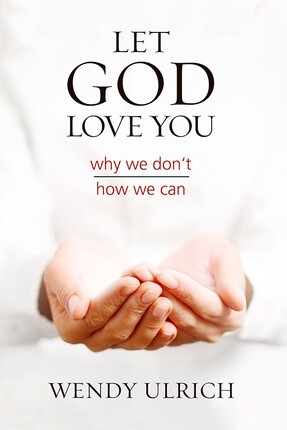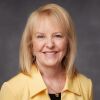Editor’s note: The following is a segment of an address originally given by Latter-day Saint Wendy Ulrich, Ph.D., at the FAIR Mormon conference and is reposted with permission.
“Who can hold the priesthood and how do they get it?”
Men are given priesthood authority by being ordained to specific offices in the priesthood by the laying on of hands by other priesthood leaders and holders and through the ordinances and covenants of the temple. They may be given specific priesthood duties and keys that authorize them to oversee aspects of the work of the Church and they delegate priesthood authority to others.
Women are given priesthood authority to fulfill specific assignments in the Church by the laying on of hands of men who hold Priesthood keys. Women are also endowed with priesthood power in the temple. Women can thus use priesthood authority to oversee and do the work of the Church in the Relief Society and other Church auxiliaries, perform specific priesthood ordinances, bring themselves and others into the presence of God, and act in the earth for the salvation of the human family.
The specific roles and responsibilities men and women assume differ somewhat, but both men and women can be given priesthood authority, they exercise priesthood power, they perform Priesthood ordinances, they are endowed, clothed, or vested with priestly identities, and they enter the Holy Order of the Son of God.
Let’s consider the evidence for each of these five assertions one at a time.
1. Women are given priesthood authority.
Elder Dallin H. Oaks says, “We are not accustomed to speaking of women having the authority of the priesthood in their Church callings, but what other authority can it be?"
His next words reveal a useful distinction for me, showing that he’s not just talking about women in the Relief Society or as temple ordinance workers, but he’s including the young woman who lines up with her peers at 6 a.m. at the door of the temple to perform a priesthood ordinance of baptism and confirmation for the dead:
“When a woman, young or old, is set apart to preach the gospel as a full-time missionary, she is given priesthood authority to perform a priesthood function. The same is true when a woman is set apart to function as an officer or teacher in a Church organization under the direction of one who holds the keys of the priesthood. Whoever functions in an office or calling received from one who holds priesthood keys exercises priesthood authority in performing her or his assigned duties.”
Apparently, the endowment also conveys specific priesthood authority of some kind to women as well as to men. Elder M. Russell Ballard, speaking to the sisters of the Church at last year’s BYU Women’s Conference, says, “Like faithful sisters in the past, you need to learn how to use the Priesthood authority with which you have been endowed to obtain every eternal blessing that will be yours.” So, women and young women can hold priesthood authority.
2. Women exercise priesthood power.
Elder Ballard again at BYU education week 2014: “When men and women go to the temple they are both endowed with the same power which is priesthood power. Access to the power and the blessings of the Priesthood is available to all of God’s children.”
Elder Russell M. Nelson at October 2015 General Conference: “The Kingdom of God is not and cannot be complete without women who make sacred covenants and keep them, women who can speak with the power and authority of God.”
3. Women officiate in priesthood ordinances.
Women are set apart as temple ordinance workers for a straightforward purpose—to perform temple ordinances. President Joseph Fielding Smith, then President of the Quorum of the Twelve Apostles, said in a talk to the sisters that Elder Oaks quoted from at General Conference recently, “A sister may have authority given to her to do certain things in the Church that are binding and absolutely necessary for our salvation. Such is the work that our sisters do in the House of the Lord. You sisters who labor in the House of the Lord can lay your hands upon your sisters with divine authority because the Lord recognizes positions which you occupy. It is within the privilege of the sisters of this Church to receive authority and power as queens and priestesses.”
On the Church’s official website, LDS.org, the Gospel Topics section includes essays that Seminary and Institute teachers have been instructed to learn like the back of their hand. In the article “Joseph Smith’s Teachings About Priesthood, Temple, and Women,” we read:
“Joseph spoke of establishing [among the Relief Society sisters] a ‘kingdom of priests.’ He had used similar terms earlier when speaking of the relationship of all the Saints to the temple. This ‘kingdom of priests’ would be comprised of men and women who made Temple covenants…. The priesthood authority exercised by Latter-day Saint women in the temple and elsewhere remains largely unrecognized by people outside the Church and is sometimes misunderstood or overlooked by those within. Latter-day Saints and others often mistakenly equate priesthood with religious office and the men who hold it, which obscures the broader Latter-day concept of priesthood.”
4. In the temple women are endowed, clothed, or vested with priesthood identities.
Any individual who attends the temple thoughtfully will notice the priesthood language used again and again in initiating, clothing, and instructing both women and men to prepare them to officiate in the ordinances of the temple—to minister in the work of angels and to enter God’s presence.
The direct descendants of Aaron, the only legitimate heirs to the priesthood in Moses’ day, were consecrated to or vested with their priestly office upon reaching adulthood through special ceremonies and sacrifices described in the Bible dictionary as follows: 1) They were washed at the door at the door of the Tabernacle. 2) They were clothed with the priestly garments, coats, girdles, and turbans. 3) They were anointed with holy oil.
They then offered three sacrifices: a sin offering to put away their sin, a burnt offering to indicate the full and complete surrender of themselves to God, and a peace or consecration offering. The priests’ hands were filled with parts of these sacrifices. These sacrificial offerings, the gifts that hence forward they would offer on behalf of the people, were thus committed to them. Women are initiated into, endowed with, clothed with, or vested with priestly identities in the temple.
5. In the temples we enter into the Holy Order of the Son of God.
The Melchizedek Priesthood was originally known as the Holy Priesthood, After the Order of the Son of God. What is this order “after” which the High Priesthood is named and structured? Wikipedia tells us that “religious orders exist in many of the world’s religions and that a religious order is a community of people who live in some way set apart from society in accordance with their specific religious devotion usually characterized by the principles of its founder’s religious practice.”
Thus, the Order of the Son of God would be a community of people set apart and organized according to the principles and religious practices of Christianity’s founder, who is Jesus Christ. That is why it’s not called the Order of St. Luke or the Order of St. Joseph or the Order of the Jesuits, but The Order of the Son of God. The Holy Priesthood is “after” this order.
In President Ezra Taft Benson’s stunning article, “What I Hope You Will Teach Your Children about the Temple,” we read more about this Order. I am quoting him at length:
“When our Heavenly Father placed Adam and Eve on this earth, He did so with the purpose in mind of teaching them how to regain his presence. Adam and his posterity were commanded by God to be baptized, to receive the Holy Ghost and to enter into the Order of the Son of God. To enter into the Order of the Son of God is the equivalent today of entering in to the fullness of the Melchizedek Priesthood, which is only received in the House of the Lord. Because Adam and Eve had complied with these requirements, (and those requirements again: to be baptized, to receive the Holy Ghost to enter into the Order of the Son of God) God said to each of them, ‘Thou art after the Order of Him who was without beginning of days or end of years, from all eternity to all eternity.’”
President Benson then refers to Adam gathering his righteous posterity in the Valley of Adam-ondi-Ahman to give them his last blessing and then says:
“The Prophet Joseph Smith said that Adam blessed his posterity because he wanted to bring them into the presence of God.
How did Adam bring his descendants into the presence of the Lord? By entering into the Priesthood Order of God. Today we would say, ‘They went to the House of the Lord and received their blessings.’ The Order of Priesthood spoken of in the scriptures is sometimes referred to as the Patriarchal Order because it came down from father to son.”
Still quoting:
“But this order is otherwise described in modern revelation as an order of family government where a man and woman enter into a covenant with God just as did Adam and Eve, to be sealed for eternity, to have posterity, and to do the will and work of God throughout their mortality. Adam followed this order and brought his posterity into the presence of God. Moses taught this Order of Priesthood to his people and sought diligently to sanctify his people that they might behold the face of God, but they hardened their hearts and could not endure His presence. The Lord further instructed Moses, ‘I will take away the Priesthood out of their midst, therefore, my Holy Order and the ordinances thereof.’ My purpose in citing this background is to illustrate that this Order of Priesthood has been on the earth since the beginning and it is the only means by which we can one day see the face of God and live. Even though the Aaronic Priesthood and Melchizedek Priesthood have been restored to the earth, the Lord urged the Saints to build a Temple to receive the keys by which this Order of Priesthood could be administered on the earth again, even the fullness of the Priesthood.”
I hope you’ve noted, as I have, that President Benson specifically and ubiquitously refers to both men and women, Adam and Eve, in his description of the Holy Order of the Son of God. “The ordinances and covenants of the temple guide the participation then of both men and women in this Holy Order, culminating in eternal marriage.”
Children, male or female, born to such a union are born in this covenant. And they become legal heirs to all the priesthood blessings, privileges, and responsibilities of that covenant just as the sons of Aaron did in his day. This is contingent, as it was in that period of time, on their later being vested with those priestly identities in the temple. This makes such a birth, to a child born in the covenant, equivalent to a priesthood ordinance for it bestows upon the covenant woman’s posterity a birthright that is both essential and otherwise attainable only through the sealing power of the priesthood.
A child not so born can turn to someone with this sealing power to receive this blessing and birthright through a priesthood ordinance in the temple.
Giving birth may be one way that covenant women participate in the priesthood power of binding on earth what shall be bound in heaven, acting in the earth for the salvation of the human family. So, women can hold priesthood authority, act with priesthood power, perform priesthood ordinances, be vested with priestly identities, and enter the Holy Order of the Son of God which can, alone, bring us back into God’s presence.



